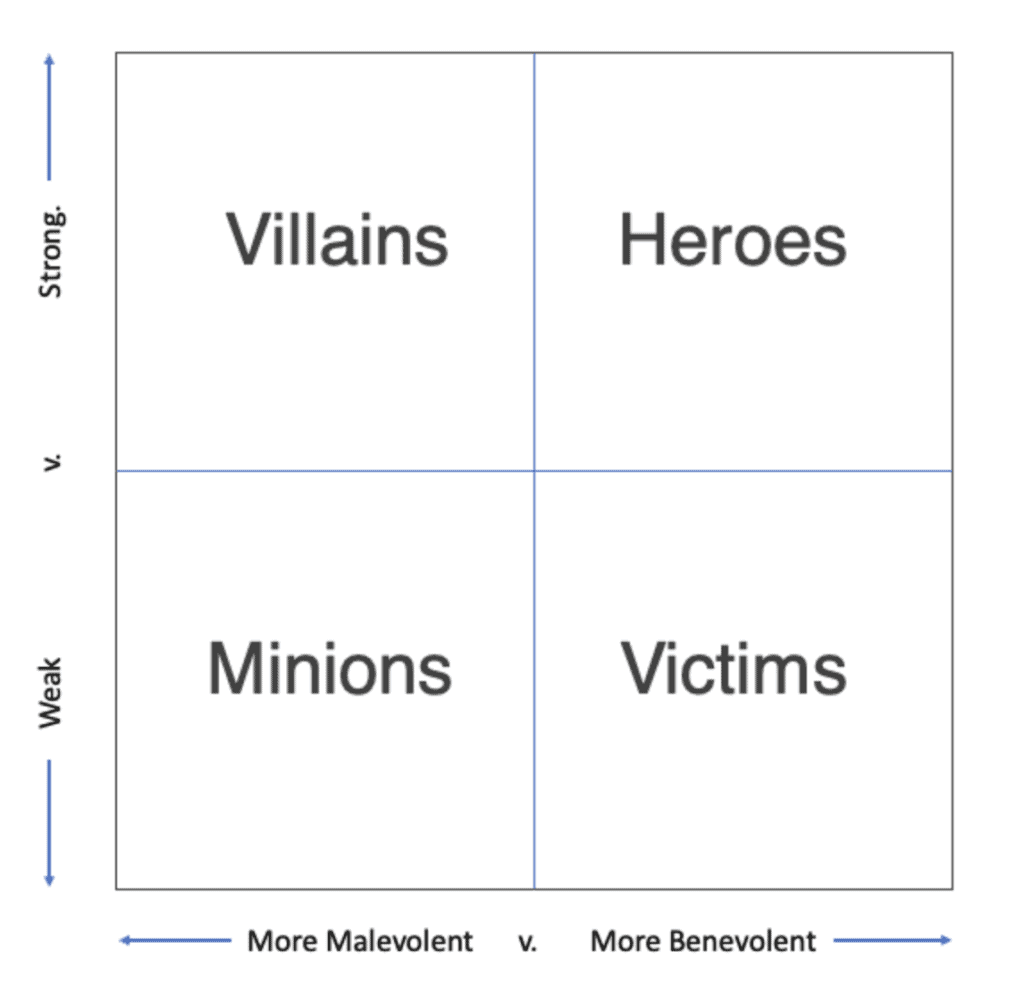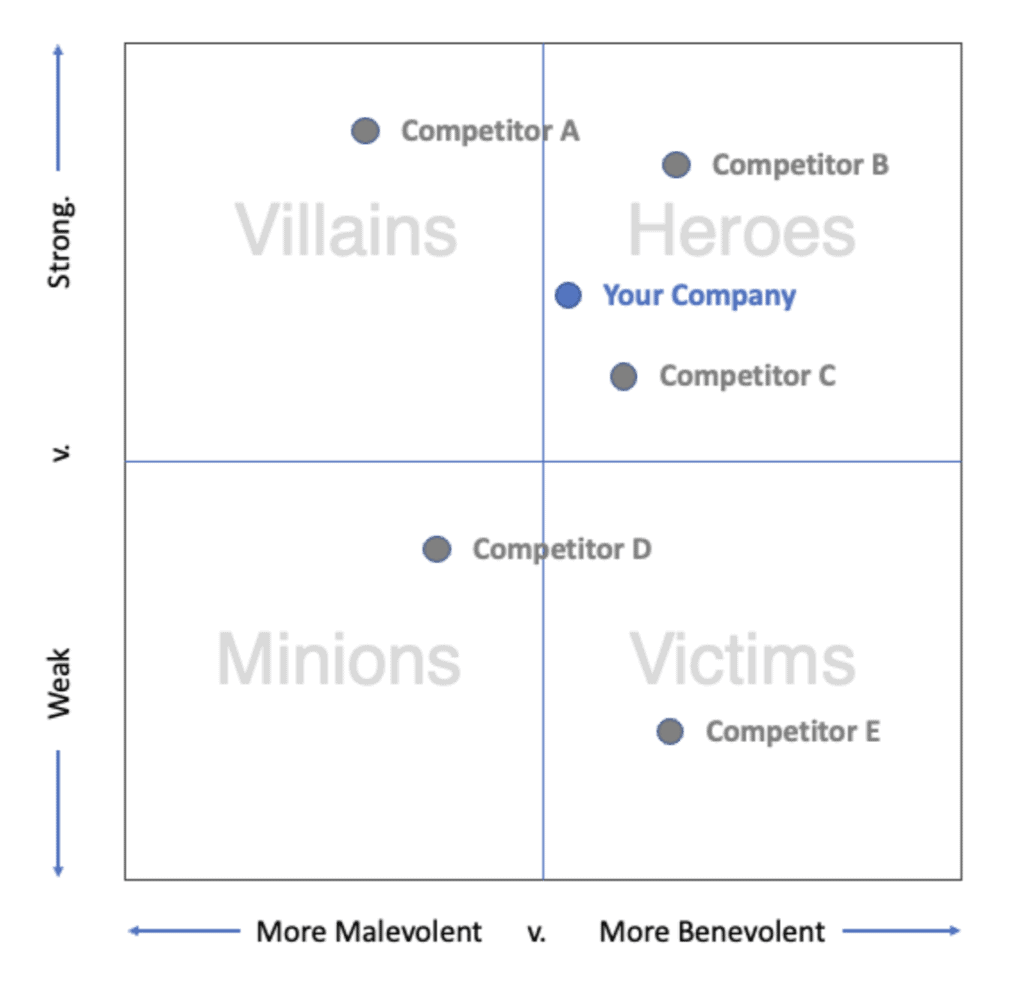A Peek into the Latest Component of Trust Analytics – Character Theory
“I think our company is doing heroic work, but we’re often made out to be villains–how can we change this?” We often hear this kind of question from our clients at Protagonist.
Leaders at big companies aren’t naive. They understand that the days of people viewing their organizations as unmitigated heroes–if those days ever existed– are long gone. But our clients also believe strongly in the good they are doing–in the products and services they bring to people that improve those people’s lives. And they are naturally troubled when their positive role in societies and markets gets short shrift.
Plus they know that companies that are viewed as villains are just not trusted. And they know how important trust is. 53% of consumers will buy first from a brand they have trusted for a long time, but 83% of consumers refuse to do business with a brand they do not trust. So being viewed as a hero, instead of a villain, isn’t a nice to have–it’s existential.
Heroes, villains, victims–these might sound like only storybook terms, but there is research that attests to the power of these character perceptions. And now, through Protagonist’s Trust Analytics offering, there’s also data science that aligns to that research.
Let’s take a quick look at the framework of Character Theory, and then how we’re incorporating it into Trust Analytics.
Take a moment to think of any entity in the world. It can be a person, an organization, a country or other actor. Now, ask yourself 2 questions:
- In your estimation, is this entity a force for good, or a force for bad?
- Is this entity powerful or weak?
Character Theory takes these two questions and turns them into character types (there are a couple of other theories involved, and we’ve added some of our own thinking as well):

So the theory is pretty straightforward. Strong, benevolent actors are Heroes, while strong negative actors are Villains. Victims are good, but they are dominated by the powerful. And some negative actors the Minions, don’t rise to the level of Villains, because they don’t wield much power.
But how does a leader know how their organization is perceived? And, just as important, how can they discover why?
We’ve recently developed a way to answer those questions. As part of our work with DARPA to analyze the characteristics of influence campaigns, we’ve developed machine learning models to measure each dimension of this Character Quadrant: power, weakness, malevolence and benevolence. We then use these ML models to analyze social media and media conversation about your company. The result is a score on each dimension, and a placement on the quadrant.
Imagine if you could see your company and key competitors plotted on the Character Quadrant with your specific scores:

This picture captures the essence of the latest component of Protagonist’s Trust Analytics. But we don’t stop with just your placement on the Character Quadrant–we also tell you why. Using topic modeling and other techniques, we can tell you what key issues are causing you to be perceived as benevolent or malevolent and weak or strong.
And that knowledge gives you a road map for moving in the right direction. Data driven guidance for what actions and messages can move your company up and to the right.
As I said, most of our clients know they are heroes–but they don’t know with certainty how they are perceived, and they don’t know what to do about harmful perceptions. Trust Analytics, with Characters, provides a groundbreaking new way to take the hero’s journey.


